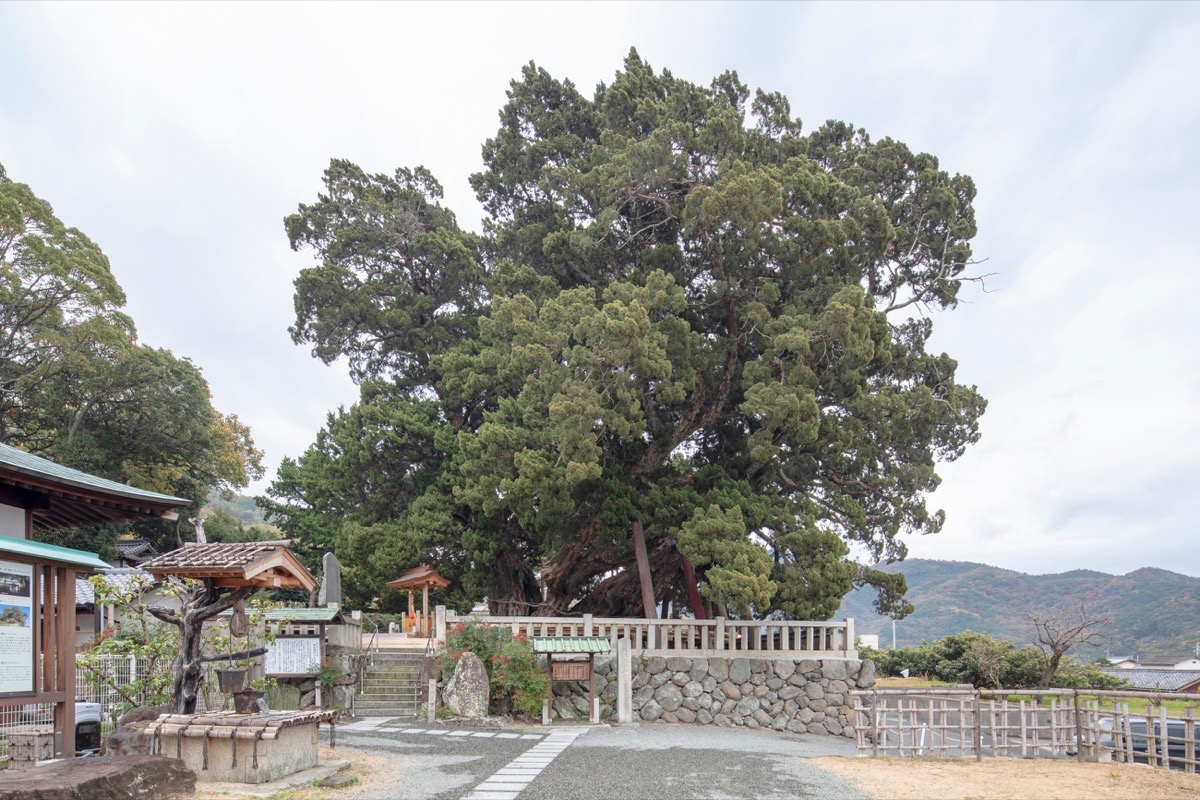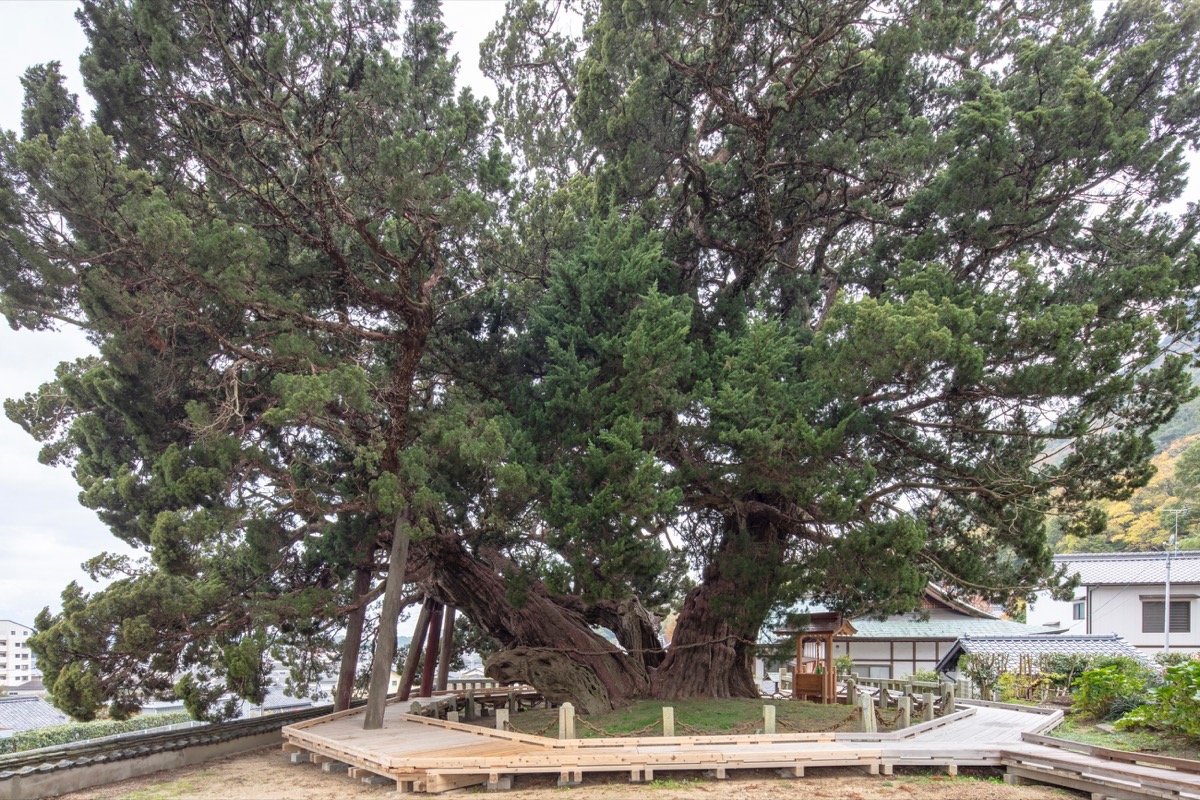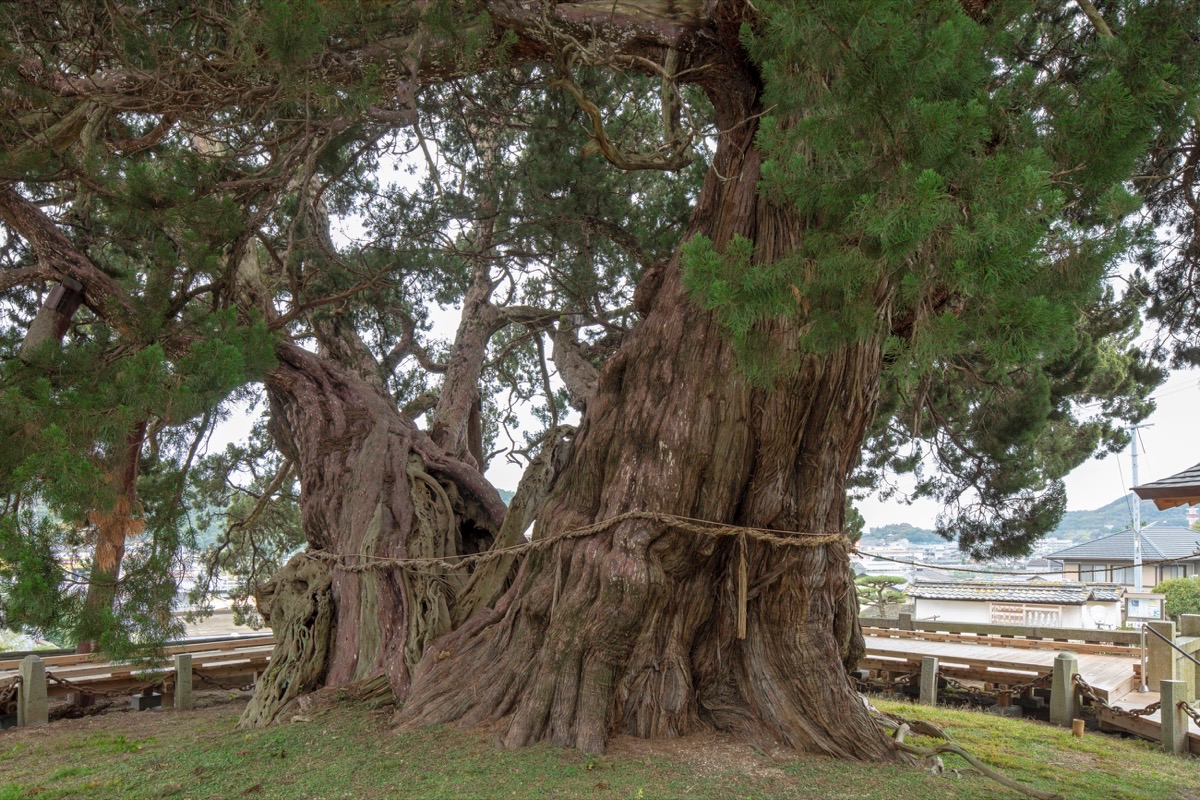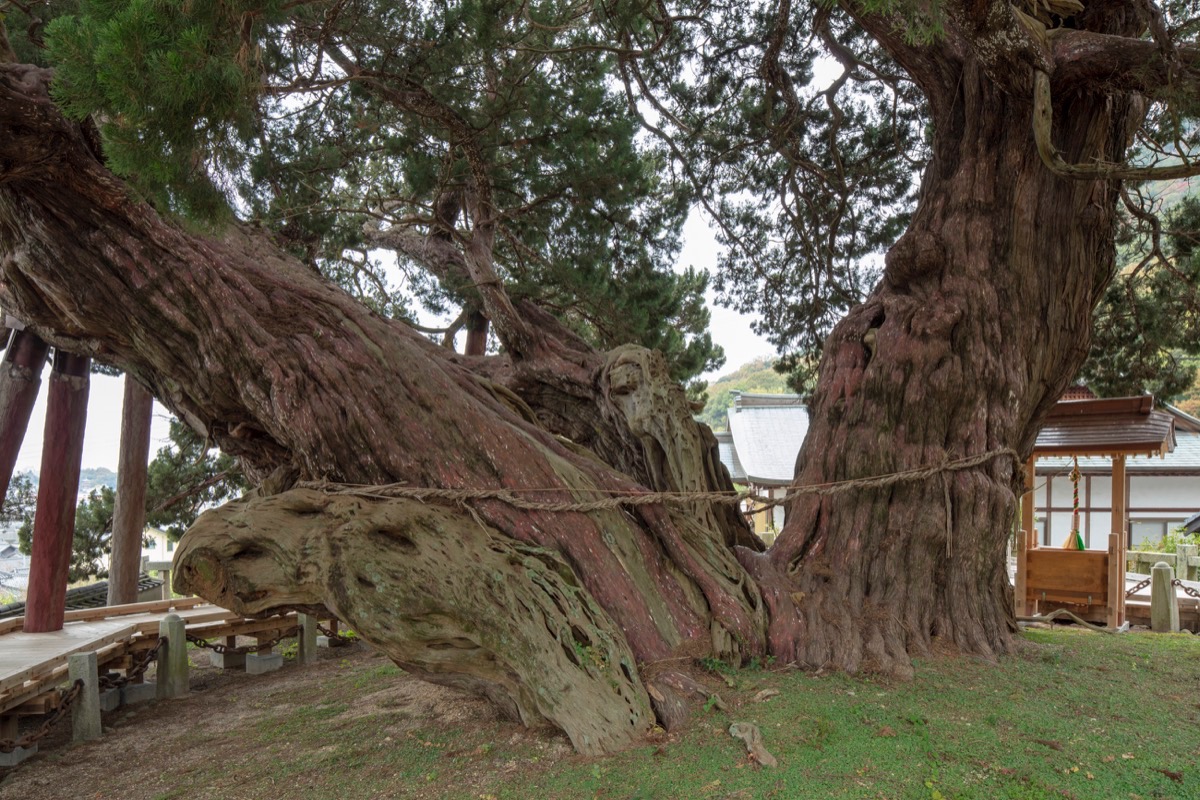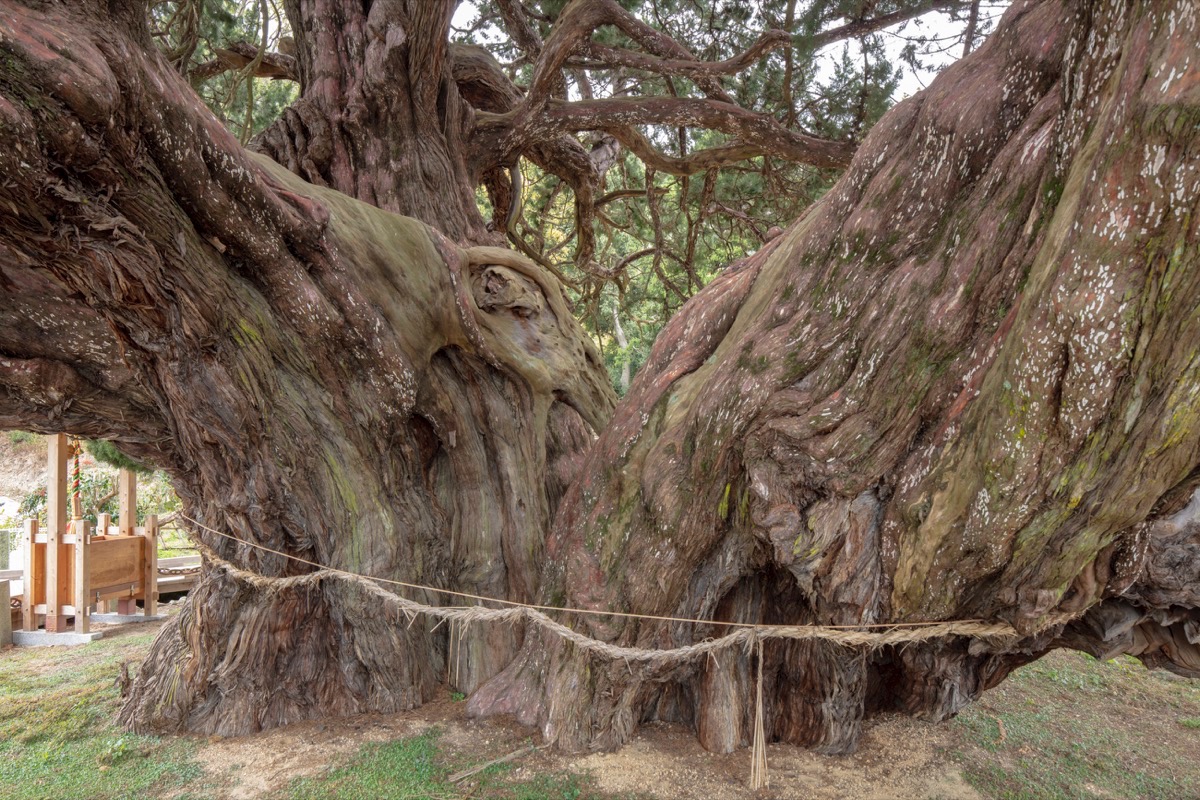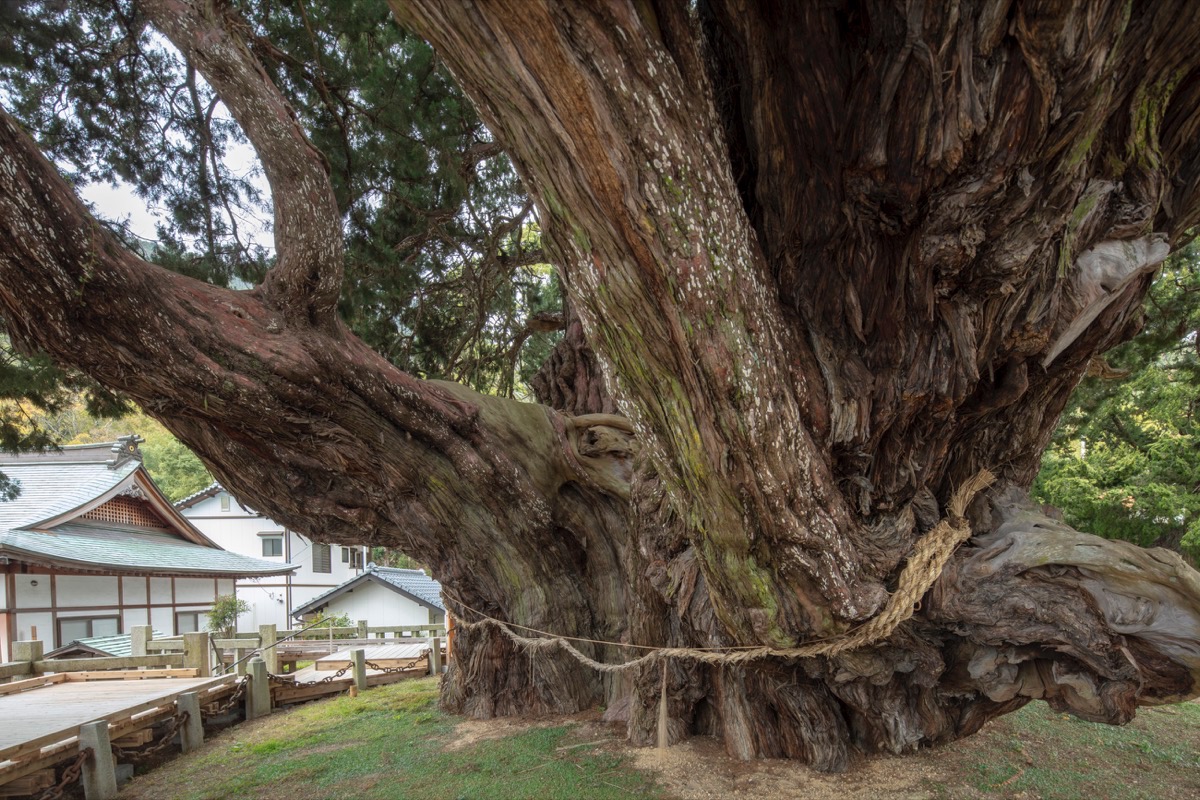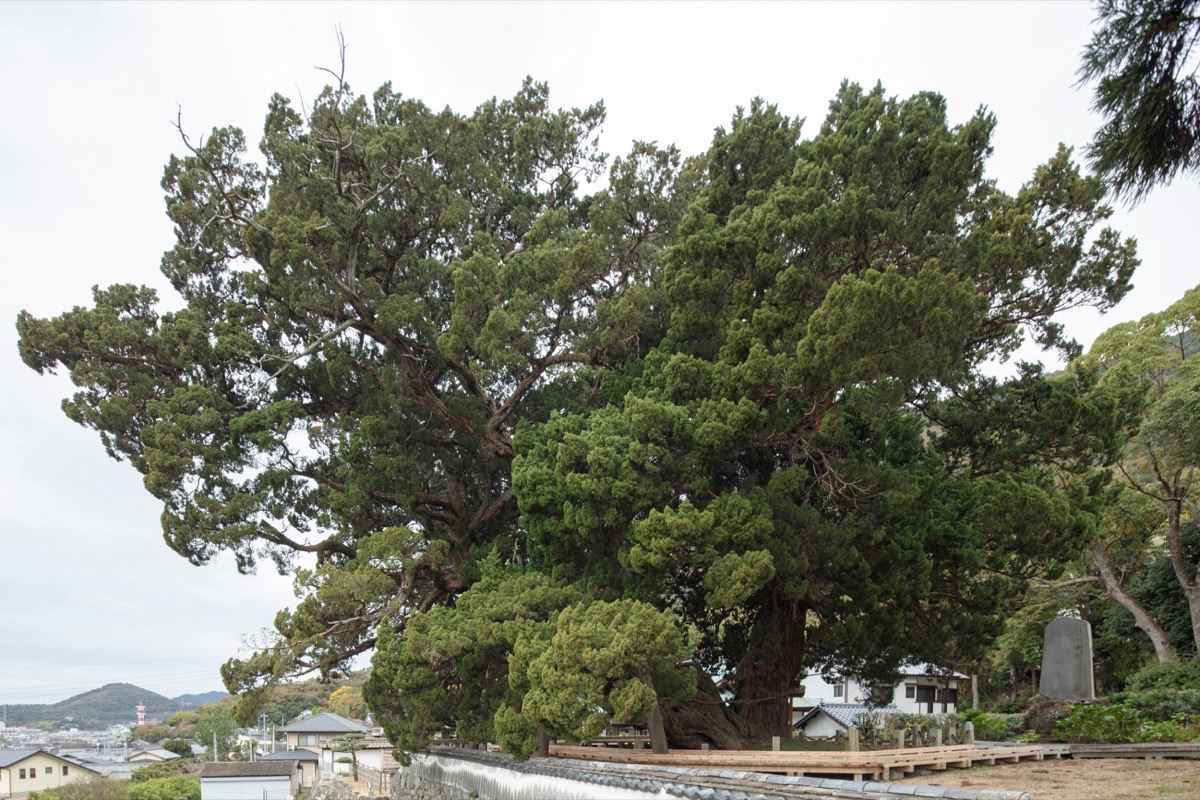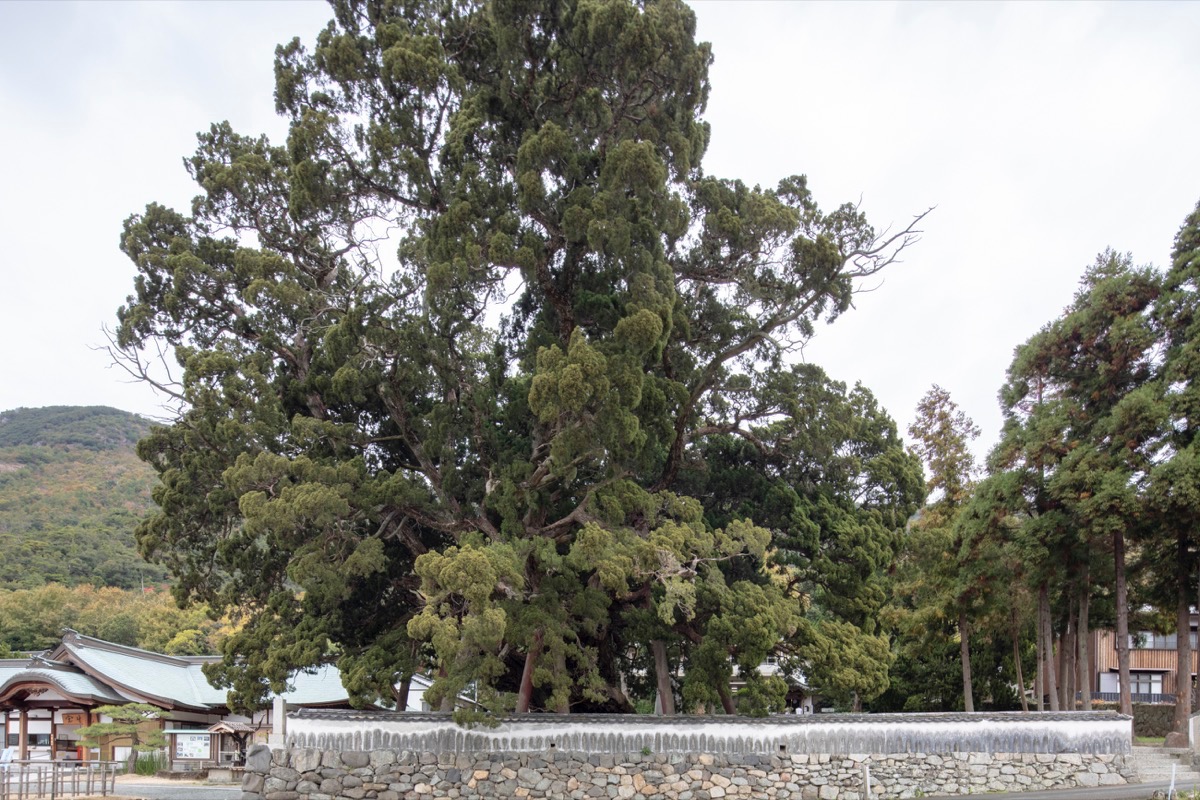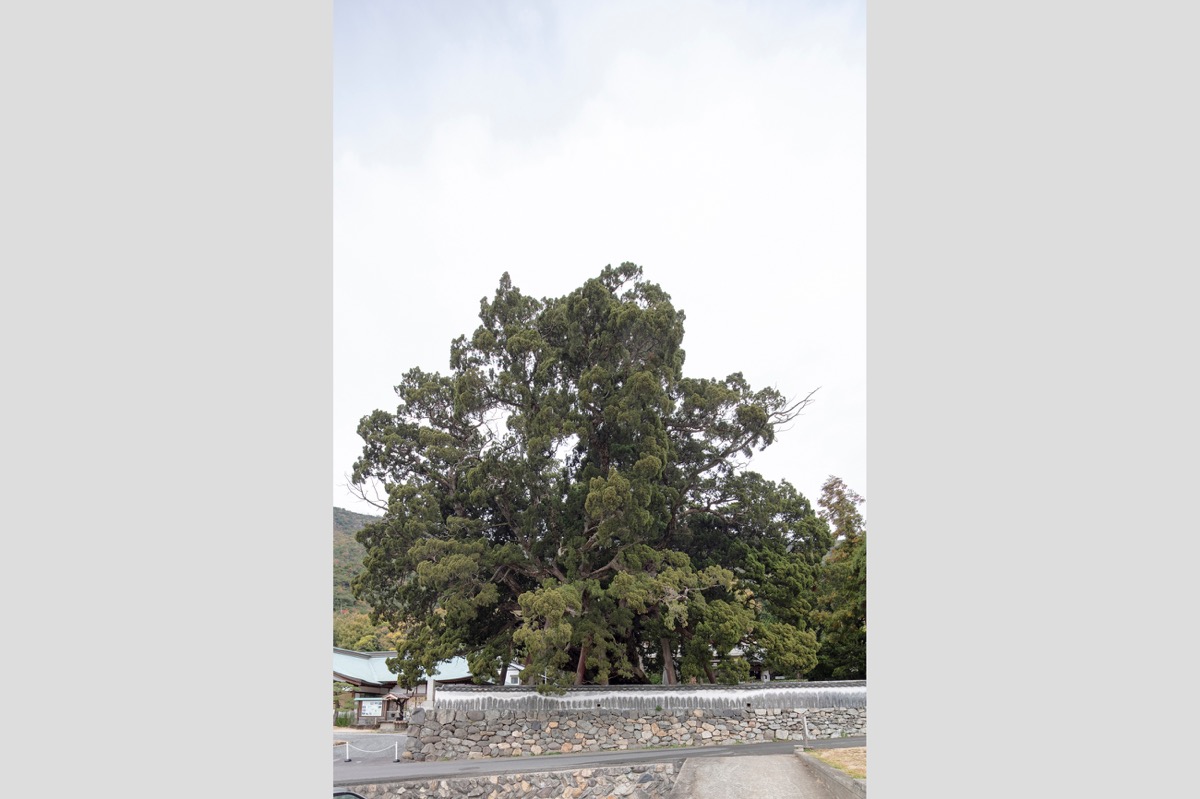Hoshoin no ShinpakuThe Shinpaku Juniper Tree at Hoshoin Temple
| District | Monuments | Period | ー |
|---|---|---|---|
| Set Content/Set Date | Special Natural Monument・西暦1955.08.22 | ||
| Owner | Hoshoin Temple | Location | 412 Aza-Nakasuji, Kamisho, Tonoshocho, Shozugun, Kagawa |
What looks like a forest on the grounds of Hoshoin Temple is actually a giant tree. Visitors can feel the indomitable life force and age—estimated at 1,600 years—of the tree, with its height of 16.9 meters and magnificent canopy about 25 meters in diameter, and the tree's thick, twisted trunk characteristic of conifers. Juniperus chinensis, known as Chinese juniper, is a species of juniper in the cypress family (cupressaceae) native to Japan, growing from Iwate Prefecture south to the shores of Kyushu Island.
There is a legend in the Nihon Shoki that says this tree was hand-planted by Emperor Ojin during his imperial visit to Shodoshima Island. In the Edo Period (1603-1867), the giant, ancient tree seems to have been recognized as representing Shodoshima Island. The tree is still a symbol of the area today.
Furthermore, this invaluable giant tree is the only juniper tree among the 30 plants designated as Special Natural Monuments (National Treasure Plants).
The Shimpaku Juniper Tree grows in a valley that stretches from Mt. Oto in the northwest. This valley, blessed with soil rich in groundwater, opens toward the southwest to let in the sunlight, which is likely the reason the tree was able to grow so large.

